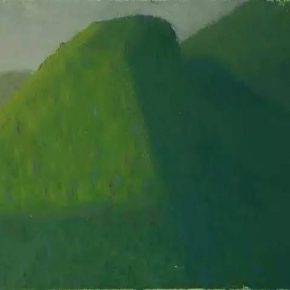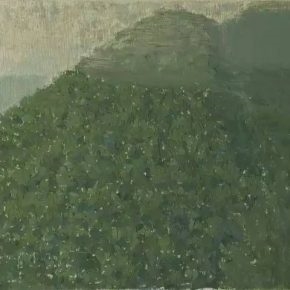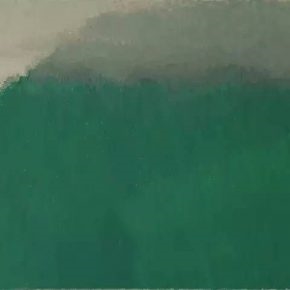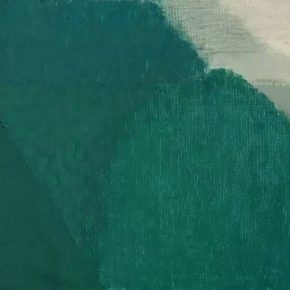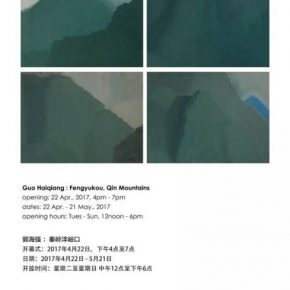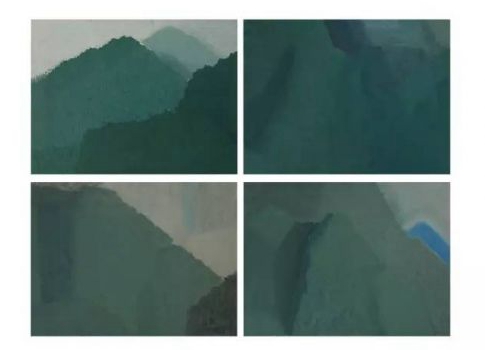
Boers-Li Gallery is pleased to present an exhibition of new paintings by Xi’an-based artist Guo Haiqiang. This will be the artist’s second solo exhibition with Boers-Li Gallery in Beijing.
As suggested in its eponymous title, Guo Haiqiang sets the focus of this exhibition at a specific locale. Fengyukou, located at the northern foot of the Qin Mountain, owes its name to the valley where the Feng River joins the Wei River, separating the north from the south. Its treacherous terrains have been known as an obstacle in accessing its natural beauty, iterated as early as by the Tang Poet, Li Bai’s Obstacles on the Path to Shu. In spite of modern day highways andmodes of transportation, the best way of experiencing this natural environment for a painter like Guo Haiqiang is to ride his bicycle to the various vantage points on the mountain. Unlike painting outdoors in the Western sense, there presentation of the mountain – in an artist’s self-exile to reclusion is a common practice in traditional China – demonstrated the intellectual/artist’s high-minded political position when the nation is confronted with adversity, or in the case of recent history of the Cultural Revolution, the No Name artists did so in search for freedom of artistic expression. In Guo Haiqiang’s case, his return to the Qin Mountain, undeniably shares similar impetus with his predecessors, at the same time, a decision construed as introspective and meditative, by which to reflect upon one’s own mediation of the landscape from a contemporary perspective.
Adopting the painting en-plein-air approach, Guo Haiqiang’s translation of the objective world is unadulterated by any technological means. Unlike the works shown in his previous solo exhibition at the gallery, where Guo has demonstrated an array of painting styles, some figurative with the introduction of vibrant colors and others reduced natural sceneries on the mountain to schematic color blocks. All of these works aim to convey an interpreted and internalized impression of the environment in which they were first conceived.
Consciously setting various frameworks to his art practice, namely his subject matter, location and time frame, Guo Haiqiang’s interests remain in exploring the possibilities of painting with limited tools, oil pastels in shades of the landscape, on a 30 x40 cm canvas. In spite of the small dimension of the work, commonly found in many works of the modernist masters, each painting not only emanates different textures, permeability, composition, color schemes, but also visualizes the physical and mental states of the artist.
For those who are familiar with strenuous physical exercise in any forms, running, cycling, rowing and etc., would notice the small and incremental changes as one improves in stamina and physical state. Guo compounds the physical training, with his up-close confrontation with the natural environment and the expressionistic dictum that painting is a direct extension of the body in rendering these entropic imageries, allegorically suggesting that there is an underlying relationship among these aspects. In the artist’s own words, “Once I achieve the optimum physical state, I would stop at that point to paint.”
Moreover, the new series of painting presented in this exhibition dates from April to September 2016, during which, the artist has made periodical trips to the site. Entitled with the date on which the work was painting, drawing reference to On Kawara’s notion of marking time. Guo Haiqiang does not make any literal statement on his immediate socialor personal reality. Instead, this reality is mediated through the ambiguous yet timed transformation of a natural environment through which the artist’s articulation is made visually apparent. Moreover, the geographical and temporal coordinates of these painting invite the viewer to find one’s own position at the cross point where the objective, subjective and experiential temporalities intersect.
About the exhibition
Duration: Apr 22, 2017 - May 21, 2017
Venue: Boers-Li Gallery
Courtesy of the artist and Boers-Li Gallery.


